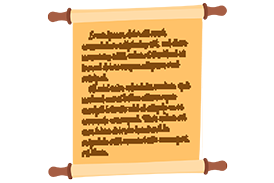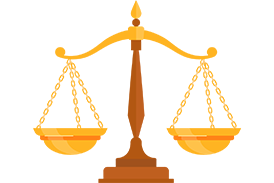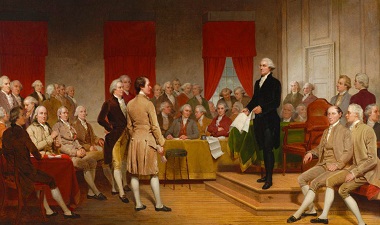
Getting Started
This module includes an Unboxing the Constitution video (5 min), Inside the Constitution video (6 min), student activities, and a learning project. Download the Teachers Guide and the Student Content Guide for more details on content and implementation. Course materials are provided in Google documents, Word documents, as well as printable PDFs.
A preview of the module can be accessed below.
Topics covered include:
- Shay’s Rebellion
- The Articles of Confederation
- State Constitutions
- Civil Dialogue

Vocabulary
At the beginning of each module, students are presented with vocabulary words and definitions.
Concept Words
Concept words are conceptually related to the big ideas in what they’re learning. These connect directly to the core concepts or themes of the lesson or unit and help students grasp the main ideas and how everything fits together.
- confederation: a group of people or countries that join together for a common reason
- executive branch: the branch of government that is responsible for enforcing the laws passed by the legislature
- judicial branch: the branch of government that interprets laws
- legislative branch: the branch of government that includes the Senate and House of Representatives and is responsible for making laws
Speed Bump Words
Speed bump words are words that aren’t central to the concept being taught, but if students don’t understand them, they may struggle to comprehend the text or lesson. These words can help shape students' overall understanding of the topic.
- faction: a group of people who are acting on their own self interests
- mob: a large group of people engaging in disorderly, illegal conduct
- rebellion: refusing to follow the rules or laws set by those in power

Topic 1: The Articles of Confederation and Mob Violence
Now that this new country had declared independence from Britain, the founders still needed to design a new government that would provide for the public good. After the Declaration of Independence, the Articles of Confederation created a relatively weak national government. At the same time, individual state constitutions governed their own territories.
Many colonists at the time wanted a weak national government with most power held by the states. They believed that their state governments were closest to the people and liked the idea of having local leaders managing local concerns. But over time, the problems with this arrangement became too obvious to ignore.
3.1: Activate Prior Knowledge
To start engaging with this material, students will work collaboratively to brainstorm topics, ideas, questions, and predictions related to what happened after the American Revolution. Use the discussion questions in the Teacher Guide to guide the activity.
Unboxing the Constitution
In this Unboxing the Constitution video, Lucy explores the events, ideas, and influential people that led up to the Constitutional Convention.
3.2: Mob Violence and a Rebellion in Massachusetts
Watch the Inside the Constitution video to learn about the time period between the Declaration of Independence and the Constitution. Afterward, ask students to consider the pivotal event of Shay’s Rebellion from multiple perspectives.
Inside the Constitution
3.3: The Articles of Confederation
Students will explore the impacts and weaknesses of the Articles of Confederation.
3.4: Closing Activity
Students will check in on the Key Question(s).

Topic 2: The "Critical Period"
By the end of 1786, it was becoming increasingly clear to the founders that the Articles of Confederation were too weak to establish the type of government they envisioned for the new country. How did this understanding help the country move toward a new plan for national government, the U.S. Constitution?
3.5: State Constitutions
Where did the ideas from the US Constitution come from? Students will explore state constitutions from this time period to begin recognizing patterns and themes among all of these foundational documents.
3.6: State Governments and Disorder
Students will read parts of Federalist No. 10 to gain insight into fears of mob rule and disorder.
Review the Teachers Guide for this module for implementation tips on incorporating this primary source into your classroom.
3.7: Civic Connection: Civil Dialogue
In this Civic Connection activity, students will participate in a civil dialogue to consider the role of government, the impacts of state and federal government on our lives today, or other big ideas from this module. Use the Teachers Guide for strategies on how to facilitate this discussion with your students.
Love civil dialogue as much as we do at the NCC? Explore the Civil Dialogue Toolkit to learn even more approaches, methods, and practical application techniques.
3.8: Reflect
To end this module, students will revisit the Activate Prior Knowledge activity (3.1) and complete the Key Question Reflection.

Learning Project: Shays’ Rebellion: From Script to Screen
In this activity, students will storyboard or design scenes that they could use to make their own documentaries about Shays’ Rebellion. When students have completed their storyboards, they will display their completed designs in an in-person or virtual gallery walk.













